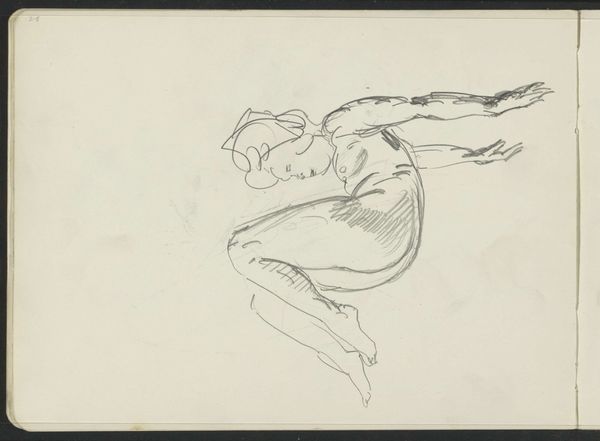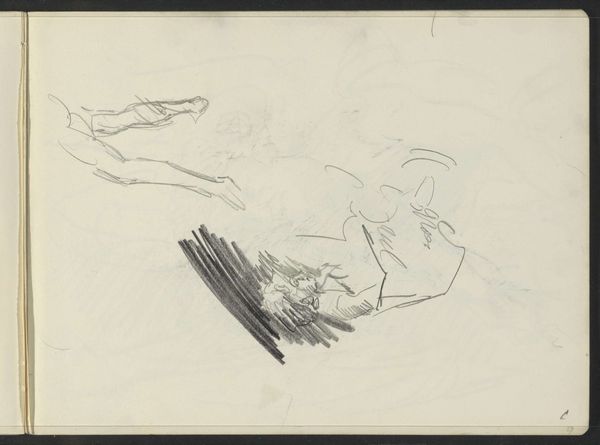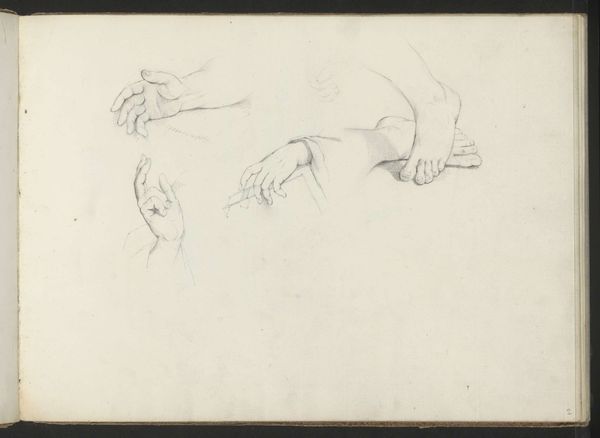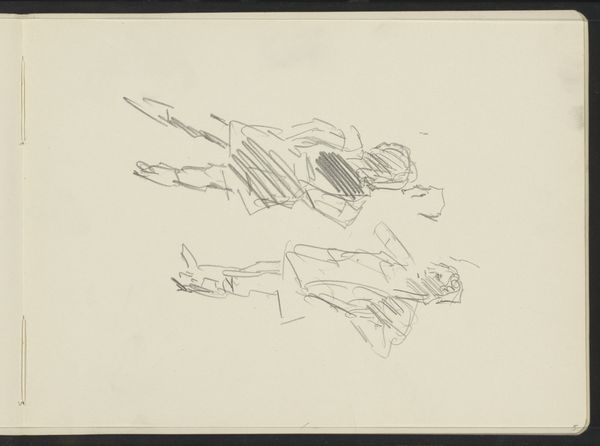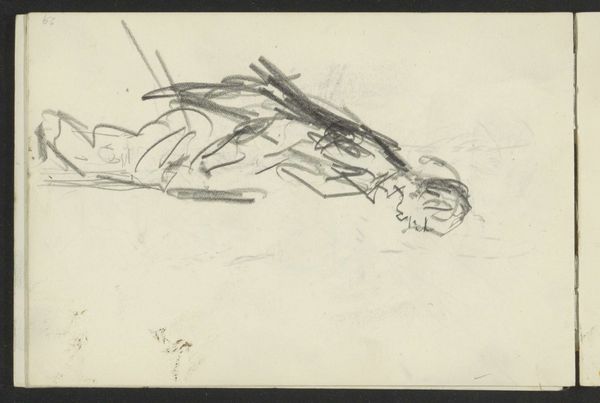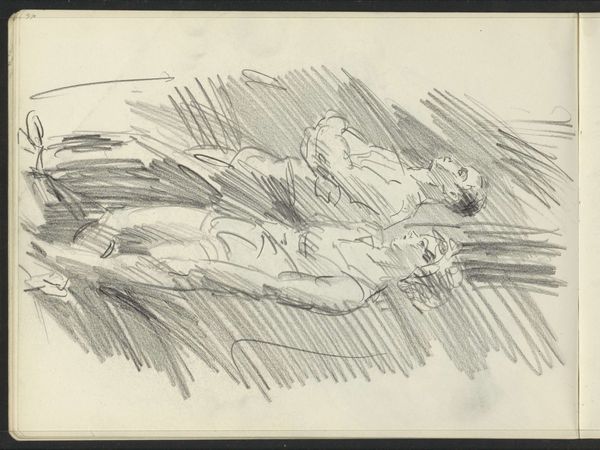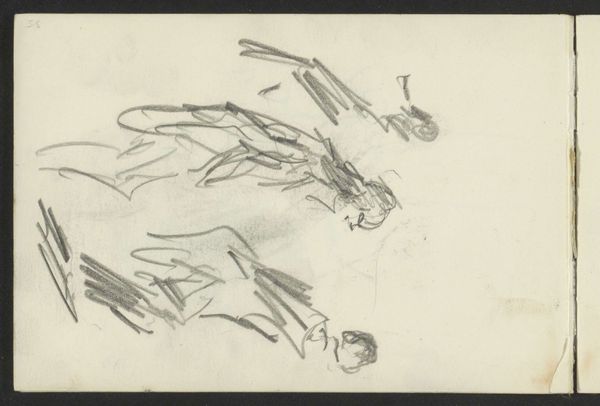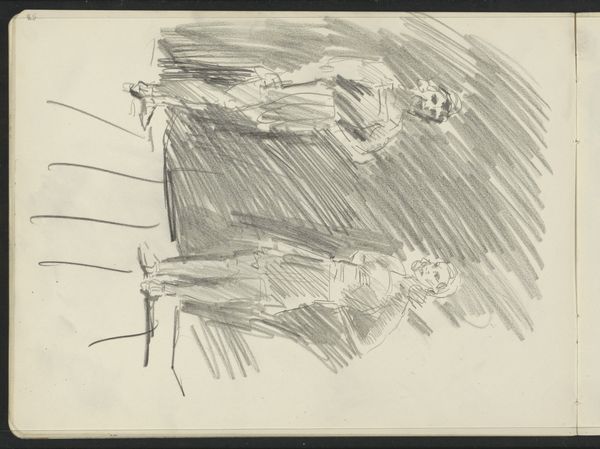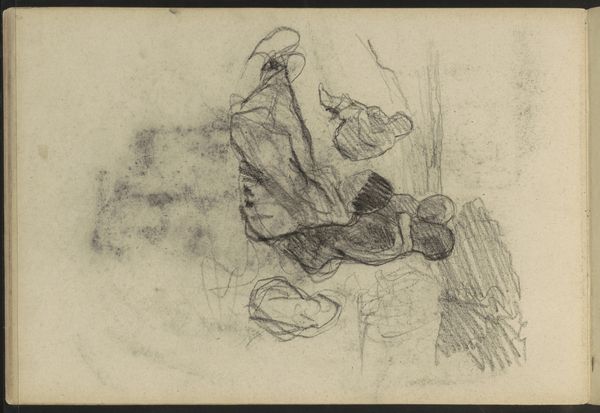
drawing, paper, graphite
#
action-painting
#
portrait
#
drawing
#
pen sketch
#
figuration
#
paper
#
graphite
#
sketchbook drawing
#
modernism
Copyright: Rijks Museum: Open Domain
Editor: This is "Studieblad met acrobaten," or "Study Sheet with Acrobats," by Isaac Israels, from around 1915 to 1925. It’s a graphite and pen sketch on paper, held at the Rijksmuseum. It feels quite dynamic, full of movement. What stands out to you in this sketchbook page? Curator: Immediately, I consider the labor involved. Look at the repetition, the almost mass-produced quality of the figures. It speaks to a commercial need, the demand for entertainment, perhaps. Where were these acrobats performing, and for whom? Were they street performers or part of a larger theatrical production? These questions help me situate the drawing in its socioeconomic context. Editor: So you’re focusing on the context of their performance rather than just the figures themselves. Is the medium significant to this interpretation? Curator: Absolutely. Israels chose graphite and pen, readily available materials. This wasn’t intended as a precious, finalized piece but rather a working document, a means to an end. We must think about the conditions of its making – the pressures, the economic realities. Who commissions these types of sketches and to what purpose? Was this artist paid well for the time they spent in this work? Editor: That makes sense. So, instead of just appreciating the skill, we should also consider the economic drivers behind its creation. Curator: Precisely! How does the act of sketching, itself a form of labor, reflect or critique the labor depicted? By considering the materiality and production process, we can move beyond aesthetic appreciation to a deeper understanding of the artwork's role within a specific social structure. Editor: This makes me think about all the unseen work that goes into a final performance, visible versus invisible labor. Thanks for sharing your perspective! Curator: And thank you for prompting me to consider these facets further. It’s in these material considerations that art truly speaks.
Comments
No comments
Be the first to comment and join the conversation on the ultimate creative platform.

